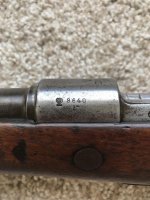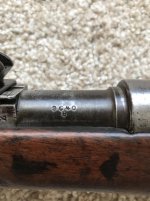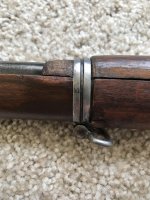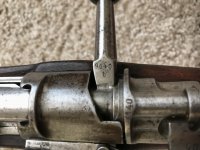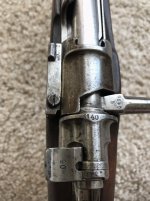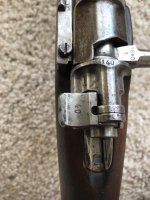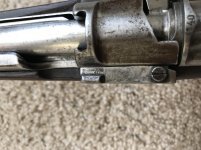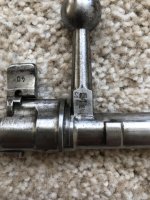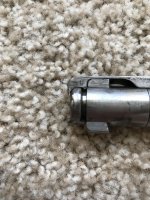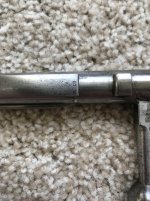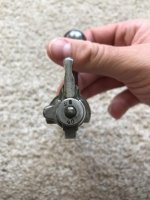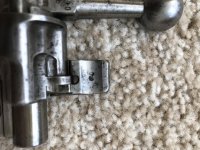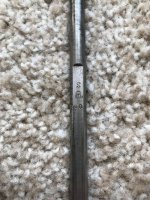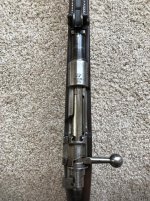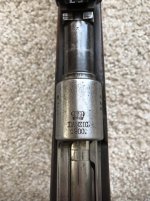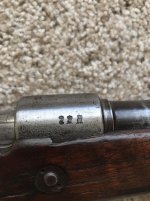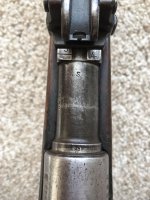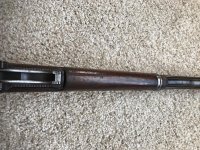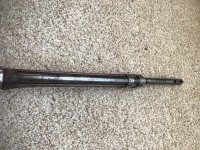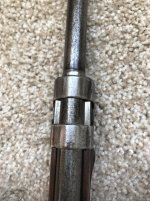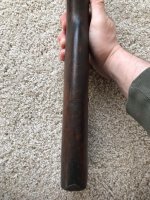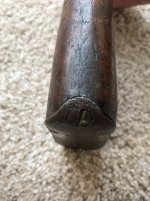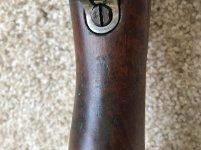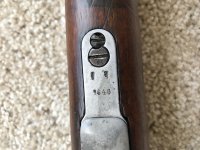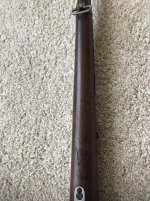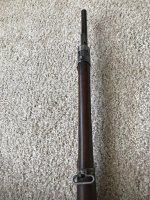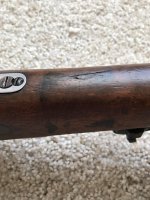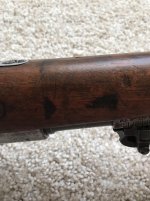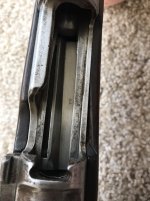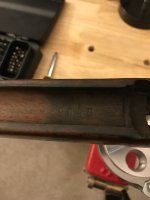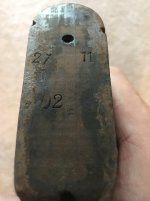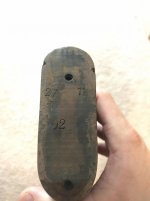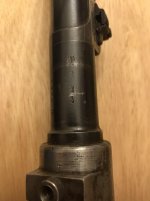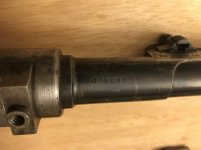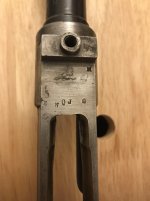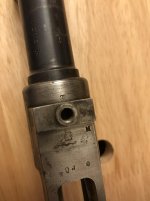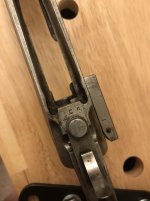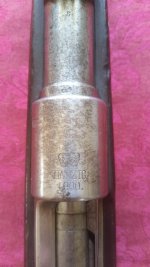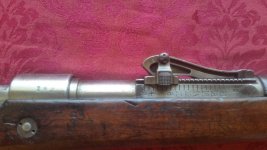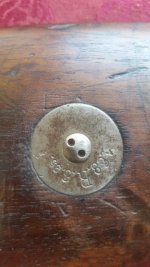mauser1908
Senior Member
Here is one that I've owned for several years. I never properly documented it when I first got it, the photos I did take of it were pretty poor quality. I will probably redo all of my rifles overtime with proper photos. So, here is take two. This particular gun is marked to the 80th Reserve Infantry Regiment, 8th Kompangie. Overall the gun is pretty well matching, though it was a wartime or before re-barrel. Wanted to highlight some of the early features for any of the newer gewehr 98 collectors; (200 meter sight base, unrelieved bayonet lug, and lack of external serial number on the stock. Paul, I was able to finally get the buttplate off with a little work, I took a few photos of the markings under it. Also the serial number suffix is hard to see but it is stamped on top of the buttplate.
Receiver SN: 9640 b
Barrel SN: 9640 b BI 9090
Front sight SN: 40
Rear sight SN: 40
Sight Slider SN: 40
Ejector box SN: 40
Trigger Sear SN: 40
Front barrel band SN: 40
Rear barrel band SN: 40
Trigger guard SN: 9640
Trigger guard screws SN: 44
Floor Plate SN: 78
Follower SN: Un-numbered armorers
Stock SN: 9640
Handguard SN: Un-numbered armorers
Buttplate SN: 9640
Bayonet lug SN: 40
Bolt body SN: 9640 b
Extractor SN: 40
Safety SN: 40
Cocking piece SN: 40
Bolt sleeve SN: 40
Firing pin SN: 40
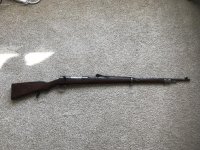
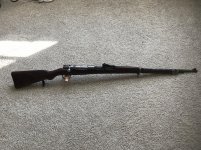
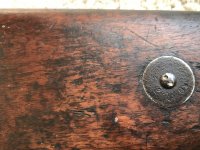
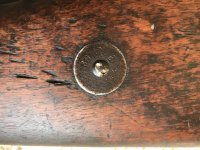
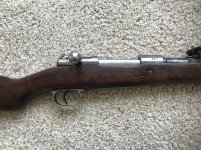
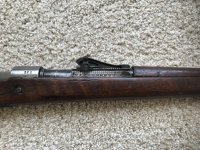
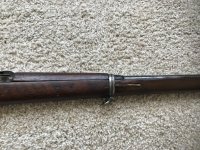
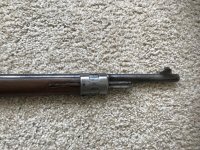
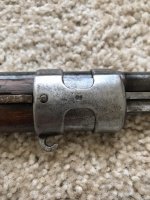
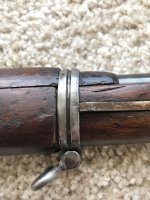
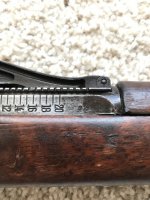
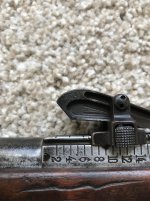
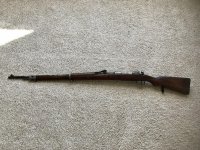
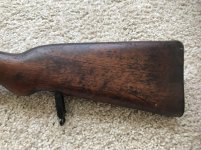
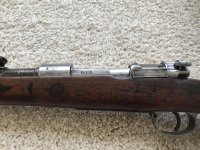
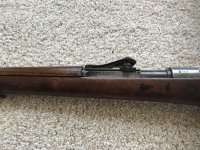
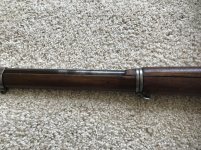
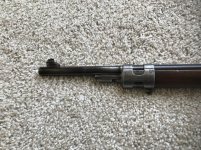
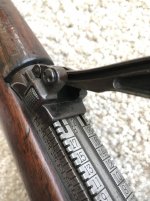
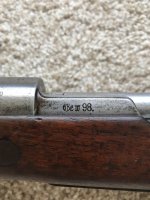
Receiver SN: 9640 b
Barrel SN: 9640 b BI 9090
Front sight SN: 40
Rear sight SN: 40
Sight Slider SN: 40
Ejector box SN: 40
Trigger Sear SN: 40
Front barrel band SN: 40
Rear barrel band SN: 40
Trigger guard SN: 9640
Trigger guard screws SN: 44
Floor Plate SN: 78
Follower SN: Un-numbered armorers
Stock SN: 9640
Handguard SN: Un-numbered armorers
Buttplate SN: 9640
Bayonet lug SN: 40
Bolt body SN: 9640 b
Extractor SN: 40
Safety SN: 40
Cocking piece SN: 40
Bolt sleeve SN: 40
Firing pin SN: 40




















Last edited:

